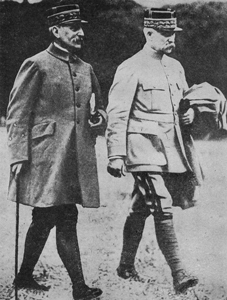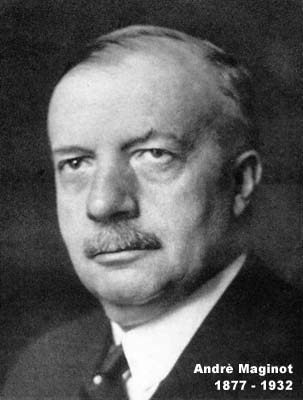
WWII: Maginot Line | Normandy | V-Weapon Sites | Arnhem
Further afield: Crete
| Home Tracing Military Ancestors Travel Advice CWGC Cemeteries Iron Harvest News Book Reviews Glossary Links Contact Me Maginot Line:
 
|
The Maginot Line – A Brief HistoryIn the 1960's film, "Dad's Army", Captain Mainwaring proudly declares that, although the war is going badly for the French, the Germans will "...never get past the Maginot Line", to which Sergeant Wilson replies, "...you obviously haven't heard the news. They didn't...they just went around it!" As Sergeant Wilson so deftly demonstrates, the popular view of the “Maginot Line”, certainly on the English side of the Channel, is of a towering monument to strategic blindness and ineptitude unequalled in modern military history. Miles of fortifications built at great expense to face an invader who never came but instead attacked through neighbouring countries to take the French defences from the rear. The idea of a huge military white elephant, doomed to fail from the time that the first foundation was laid, is a seductive one...but it is also an entirely incorrect assessment. For the truth is that the Maginot Line did achieve the purpose for which it was built. It was strong enough to dissuade Hitler from launching a direct surprise attack on France along its vulnerable eastern border with Germany and forced the Germans to launch their main offensive on a narrower front in Belgium. It also allowed the French Army to hold the greater part of their border with fewer soldiers. This was a vital consideration given the disparity in populations between France and Germany (40 million to 70 million) leaving their mobile field army free to engage and defeat the invaders on Belgian, not French, soil. The truth is that the French Army lost the Battle of France in 1940, not because the Maginot Line failed, but because the high command’s planning for and handling of the Battle of France never took advantage of the strategic and tactical opportunities the success of the Maginot Line presented them.
Genesis of the Line The First World War nearly destroyed France. It left 1.7 million of her male population dead and large swathes of the north east of the country, where the majority of the industry was concentrated, a virtual wasteland. Despite the huge reductions in the German military dictated by the Treaty of Versailles, it wasn’t long before the French high command began to plan how France could defend itself against its powerful neighbour in the future. There were several schools of thought – heavily influenced by their respective proponents’ experiences in the First World War. Marshal Foch, the supreme allied commander during the more mobile closing stages of the war, advocated a major offensive across the Rhine should Germany threaten. Other senior officers crystallised their opinions around that of Marshal Petain, the victor of Verdun, that a defence in depth, with pre-planned fields of fire taking advantage of the terrain wherever possible, would stop any German offensive in its tracks.
Gradually this latter opinion with its “battlefields prepared in peacetime” concept, particularly when considered in combination with the population argument, won through and, in 1927, the “Commission d’Organisation des Régions Fortifiés” or CORF was established to oversee construction. Two years later the renowned war hero, André Maginot, became Minister for War and used all his drive and enthusiasm to kick-start the project. So synonymous did he become with the new defences that by the mid-1930’s the fortifications were being described as the "Maginot Line". |

